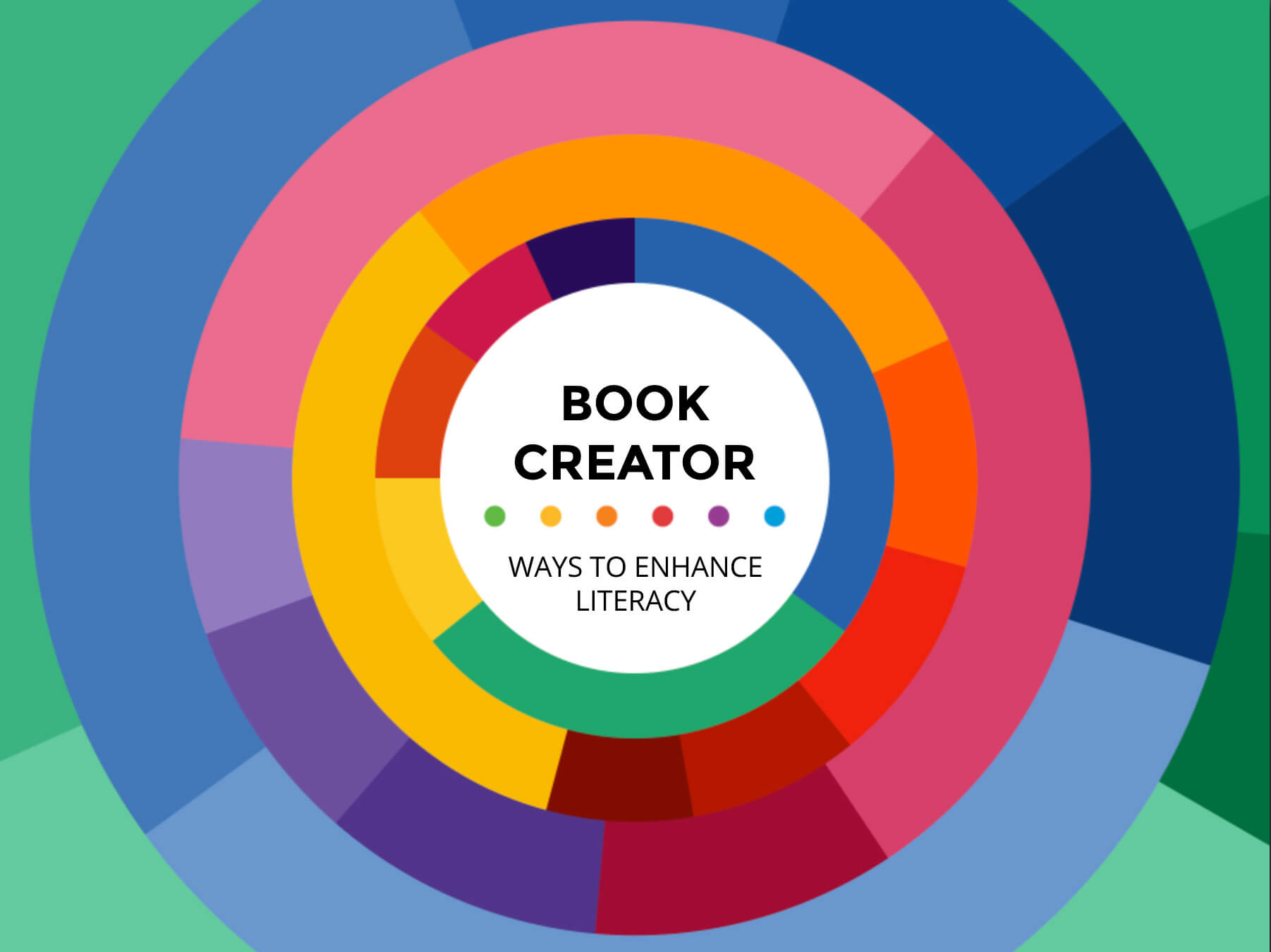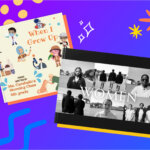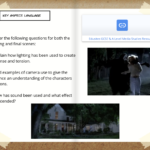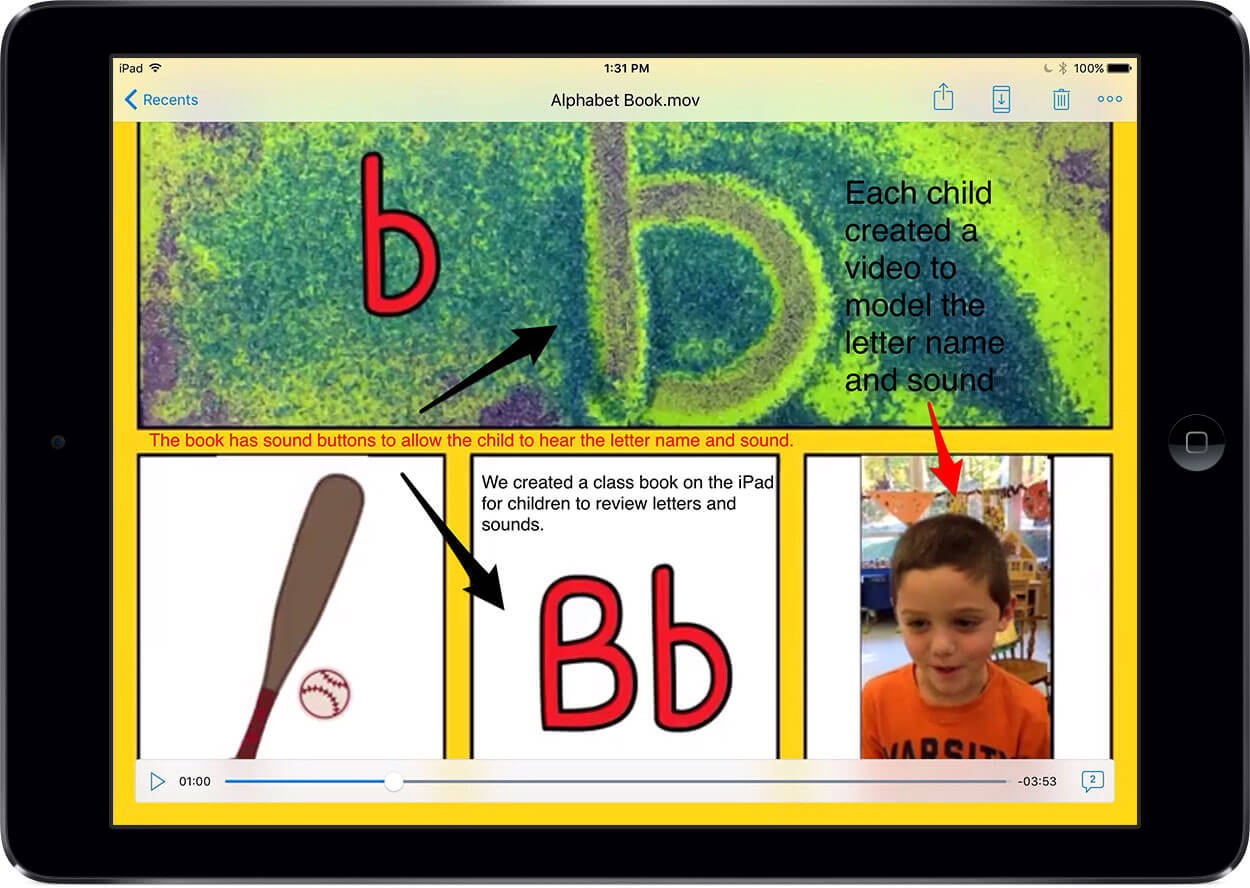Book Creator's Head of Literacy Learning Randi Ahrndt on how to unlock the magic of color theory in education.
In the enchanting world of education, there's a magical ingredient that often goes unnoticed but has the power to transform the way students learn and comprehend - color. It's a captivating secret that researchers and educators have been exploring for years.
As we embark on this colorful journey, we'll dive into the depths of color psychology, explore the impact of different colors on learning, and discover practical ways to harness the magic of color in education.
Read to the end to learn about a feature update that supports this practice, and get the templates used in this post.
Color pyschology unveiled
Color psychology is a fascinating field that delves into the intricate relationship between color and human behavior, including learning. For decades, scholars have dedicated themselves to deciphering the mysteries of color, and what they've found is truly captivating.
Traditionally, classrooms have been dominated by the classic combination of black text on a white background. It's a familiar sight in schools across the world, but does it really optimize learning? The resounding revelation from color psychology suggests otherwise. Black and white, it turns out, might be more about tradition than effectiveness when it comes to nurturing literacy skills.
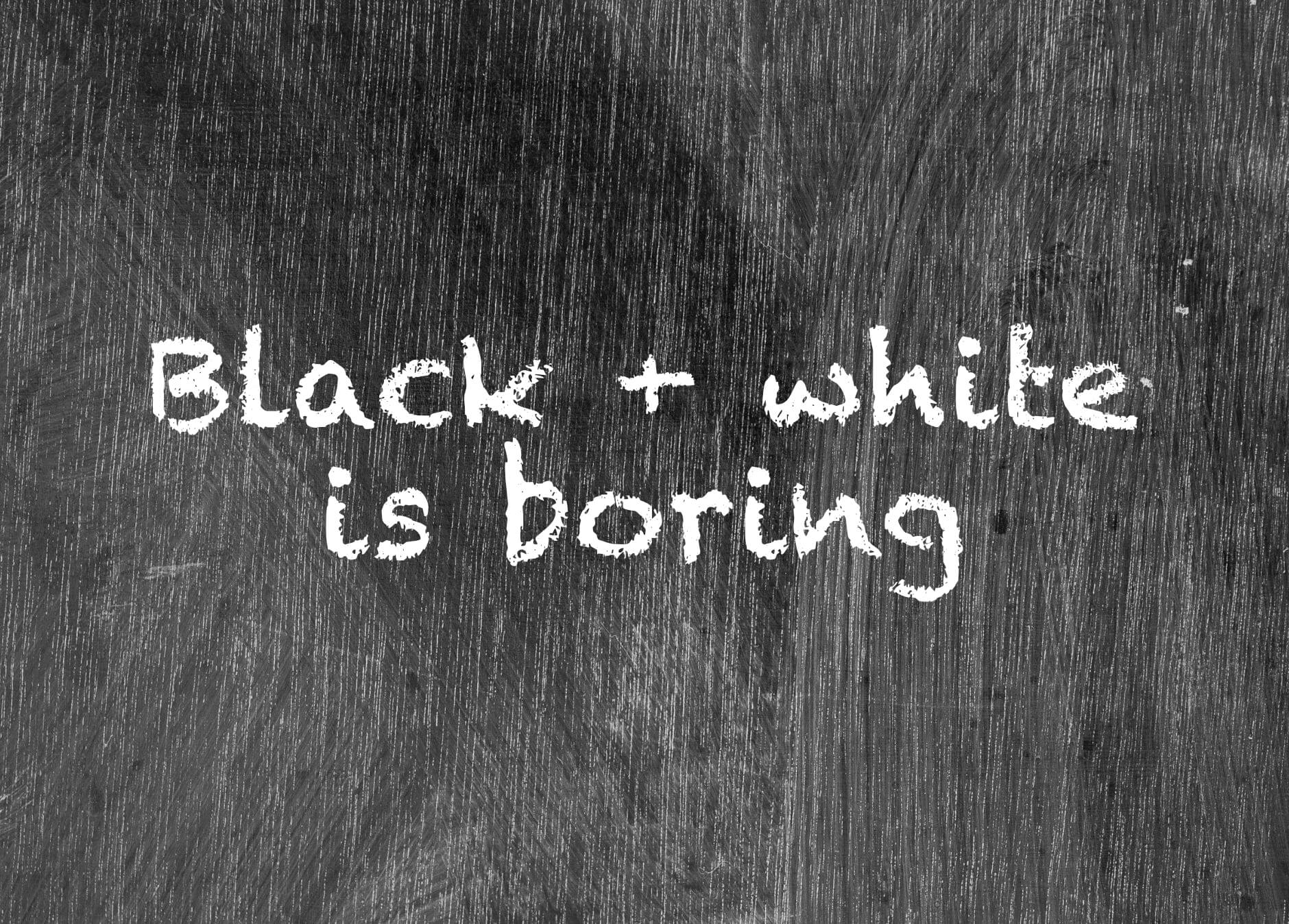
In simpler terms, black and white might be boring, and there are better color combinations for aiding students' reading. But what are those colors, and how can they be used effectively in the classroom?
The impact of color on learning
Colors have a profound impact on how we perceive and process information. Each hue has its unique characteristics and can evoke different emotions and reactions. Let's explore the colors that often grace classrooms and their effects on learning.
Yellow: The Attention-Grabber
Imagine a classroom bathed in the warm glow of yellow. This color is the most attention-grabbing of them all. It's like a spotlight on the stage of learning, highlighting key information. When used strategically, a touch of yellow can draw students' attention to important concepts, just like highlighting key words in a text or indicating warnings.
However, a word of caution - too much bright yellow can be overwhelming and lead to eye strain. But here's an intriguing twist: studies have shown that pale yellow, instead of plain white, can enhance readability for struggling readers, visually impaired students, and those with dyslexia. It's a gentle, soothing alternative that enhances the reading experience.
Red: The Stimulator
Picture a classroom with splashes of vibrant red. This color is a true attention-grabber, perfect for emphasizing critical details.
However, when it comes to extensive reading, red might not be the best choice. Some individuals find it challenging to concentrate on long passages presented in red. Why? Red is associated with strong emotions, and it can be distracting or even overwhelming for some.
Interestingly, people may also associate red with errors or warnings. So, instead of using red to mark mistakes, consider using it to teach key concepts, patterns, or vocabulary. It's a powerful tool when applied thoughtfully.
Green: The Soother
Now, let's turn our attention to the calming, soothing world of green. Imagine a classroom filled with shades of green - the prime color of the natural world. Green is often associated with feelings of relaxation and balance. It's the color of lush forests and tranquil meadows. In the realm of learning, green can work wonders.
Green is believed to enhance concentration and focus, making it particularly useful in materials that require sustained attention, such as textbooks and study materials. Dark green text on a light background is easy to read and provides excellent contrast, which is essential for comfortable reading.
But that's not all. Green has another superpower - motivation. One study found that people with a "high need for achievement" consistently chose green over red, which was favored by those with a "low need for achievement." Participants in the study also associated words related to success with the color green. It's a color that not only soothes but also inspires.
Blue: The Tranquilizer
Our journey through the colors of education wouldn't be complete without a deep dive into the calming world of blue. Picture a classroom adorned in shades of blue - a serene, tranquil environment that promotes focused learning.
Blue is often associated with feelings of calmness, serenity, and relaxation. It's the color of the clear sky and the calm sea, and it brings a sense of trustworthiness and reliability to educational materials.
Blue, especially in lighter shades, is like a soothing balm for the eyes during extended reading sessions. It helps reduce eye strain and visual fatigue, making it an excellent choice for study materials or documents where maintaining focus is crucial. Dark blue text on a light background provides good contrast and readability, making it a practical choice for both printed and digital educational materials.
In summary, blue is widely considered a favorable color for reading and learning due to its calming, focusing, and trustworthy qualities. It contributes to a positive reading experience and may be particularly effective in educational settings.
The colorful classroom in action
Now that we've explored the impact of different colors on learning, let's see how we can put this knowledge into action in the classroom. How can educators and parents incorporate color to enhance student learning, comprehension, and skills?
For young learners, identifying letters and understanding their sounds is a crucial step in the journey to literacy. However, some letters may look remarkably similar, leading to confusion. This is where color comes to the rescue.

Imagine a classroom where uppercase and lowercase letters are color-coded. It's a simple yet effective way to help students match letters, identify common reversals, and distinguish between consonants and vowels.

This approach not only aids in recognition but also adds an element of excitement to learning. When letters are associated with vibrant colors, they become more memorable and engaging. It's a small change that can make a big difference in a child's literacy journey.
What about accessibility?
It’s important to note, however, that the use of color must always be used with a side of caution. Color blindness affects approximately 8% of the population, meaning that in a class of 25 students, one or more will likely have difficulty distinguishing between certain colors. The most common kind of color blindness is between shades of red and green, while the second most common is between shades of blue and yellow. Although the use of color can positively impact some students, be aware it could negatively impact others.
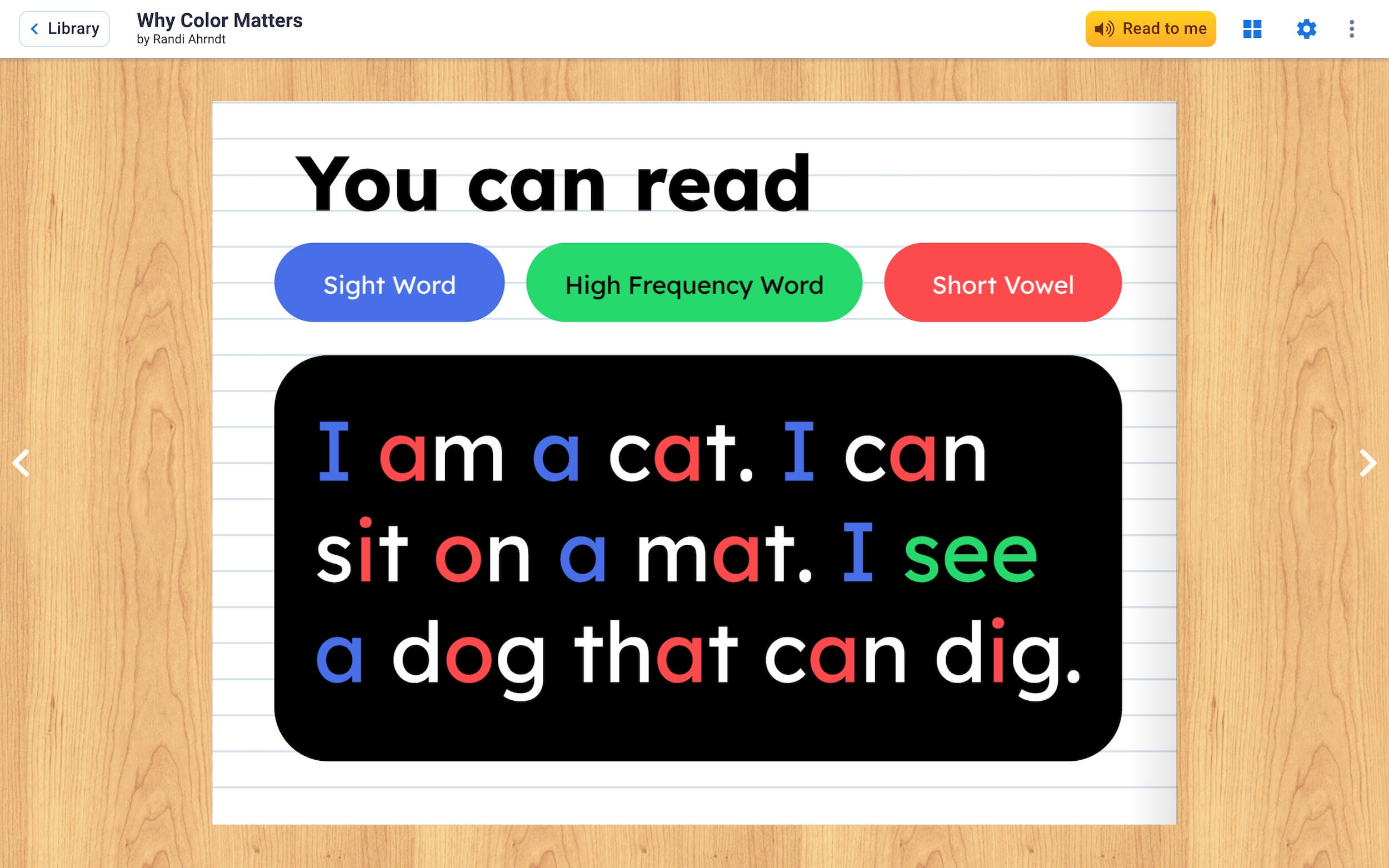
Supporting older students
How can we support our older students? One example is through syllabication, or the process of breaking words into their component parts or syllables. This is fundamental to decoding (sounding out words) and encoding (spelling). Students need to understand that each syllable must contain a vowel or vowel sound. To help students grasp this concept, color becomes a valuable tool.
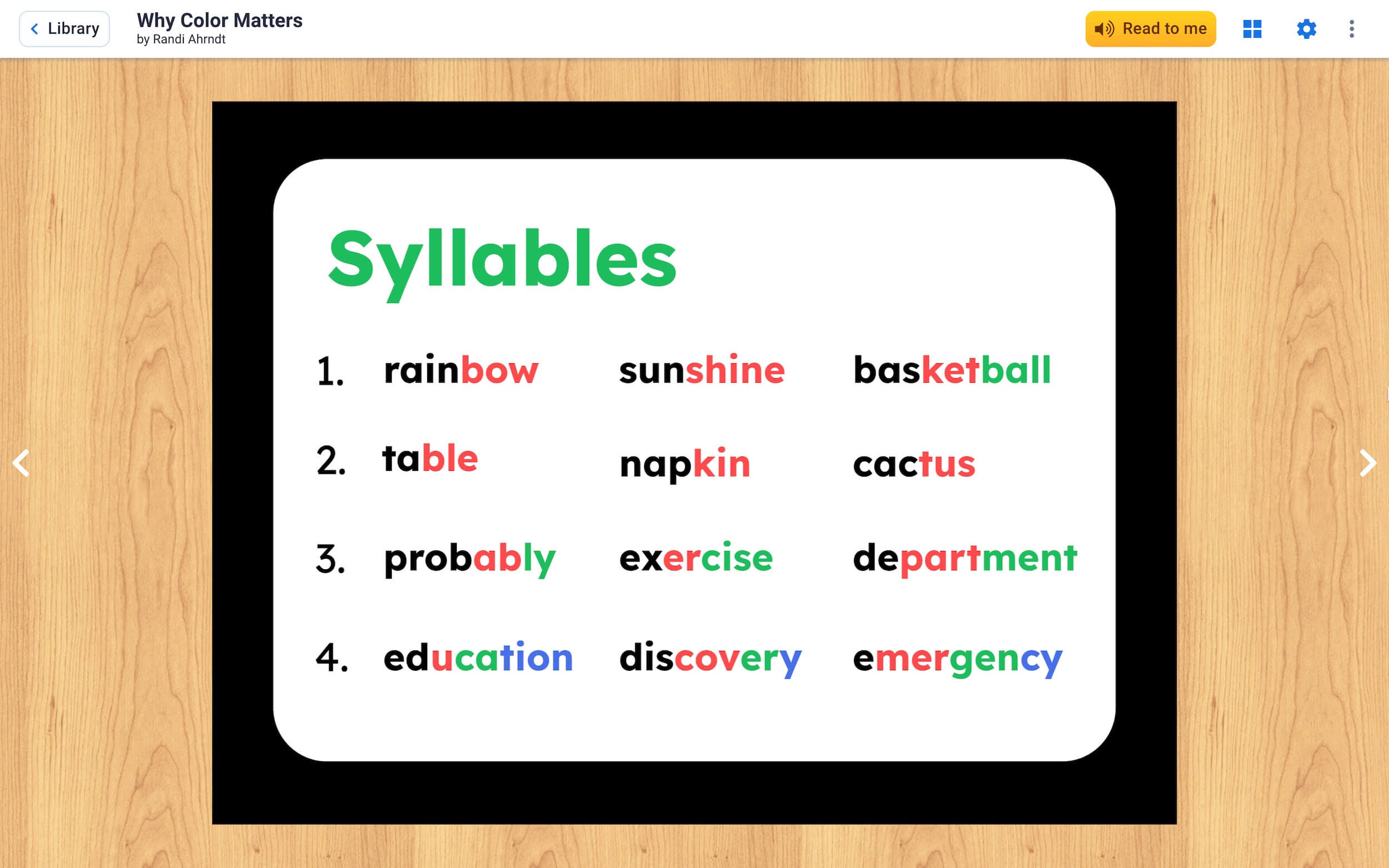
Get the remixable templates
To give you a helping hand to get started, we've made the examples above (and a few others) available for you in a remixable book.
Copy the book into your library and edit as you need to.
Feature update: More options in the text editor
One of the reasons for highlighting this color theory is that we've just made an update to the text editor in Book Creator which gives you the option to style individual words and letters like in the examples above (and a whole lot more!).
Check out this thread which explains how to style individual letters and words, and how to use special characters, bullet lists and more.
FEATURE UPDATE 🌈
New text editor options in Book Creator!
read on...1/7 pic.twitter.com/GrYrKLUm9w
— Book Creator Team (@BookCreatorApp) September 5, 2023
Randi Ahrndt is Book Creator’s Director of Product & Learning. With over 15 years experience in education as a Principal, Literacy Coach and Elementary Teacher, Randi brings a unique perspective to our team. She is a wife and boy mom x3, who loves reading, tacos and travel.



